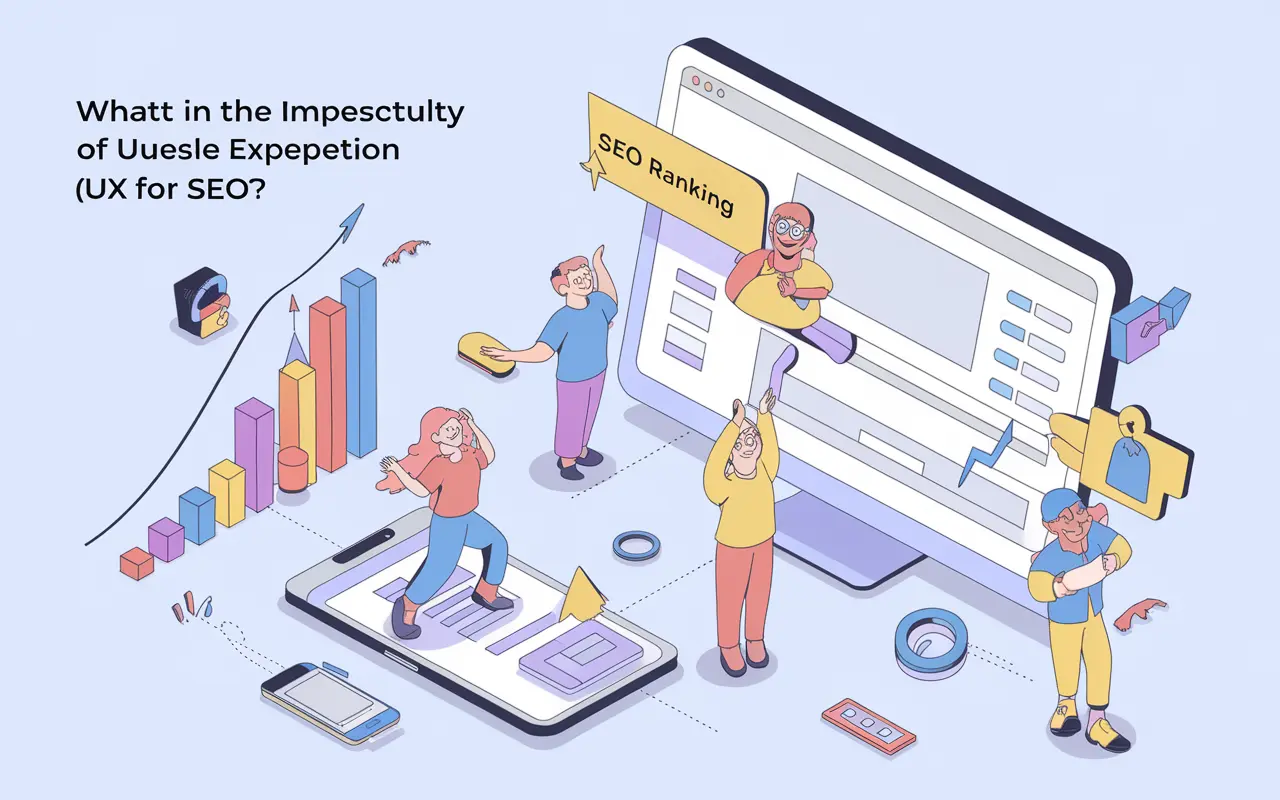Understanding the Role of User Experience (UX) in SEO
User Experience (UX) in SEO refers to designing websites that deliver seamless, intuitive, and valuable experiences to users. It involves optimizing website usability, structure, design, navigation, and content to keep users engaged and satisfied. Google considers several UX signals—like page speed, mobile friendliness, and bounce rate—when ranking websites, making UX a key component of successful SEO strategies.
In the context of SEO services, UX is essential because it indirectly influences organic rankings. A well-structured site with excellent UX not only satisfies users but also helps search engines crawl and index content more effectively.
UX bridges the gap between visual appeal, functional design, and search engine accessibility — factors that result in higher engagement, lower bounce rates, improved site authority, and ultimately better search rankings.
Key Takeaway
UX enhances SEO by improving site usability, engagement, and satisfaction—leading to better rankings, lower bounce rates, and higher conversion rates.
Why UX is Vital for SEO Performance
Google’s algorithm prioritizes user satisfaction. UX-driven SEO strategies ensure your content is accessible, findable, and enjoyable—helping users stay longer and convert more effectively. Here’s why it matters:
UX Sends Positive Behavioral Signals
Google measures user behavior metrics such as Click-Through Rates (CTR), Time on Page, Bounce Rate, and Pogo-Sticking. A better UX leads to improved engagement and signals to Google that your site is relevant.
Improves Mobile Responsiveness and Accessibility
Over 60% of searches come from mobile devices. An intuitive mobile experience enhances SEO rankings, especially since Google uses mobile-first indexing.
Faster Loading Times Improve Rankings
Site speed is a core web vital and a confirmed ranking factor. UX improvements like image optimization and proper caching directly influence performance.
Reduces Bounce Rate and Increases Dwell Time
UX-centered design keeps users engaged and encourages them to explore more pages—signaling content value and relevance to search engines.
Best Practices to Optimize User Experience for SEO
- Implement Clear, Intuitive Site Navigation: Use logical hierarchies and internal linking to guide users and bots.
- Prioritize Mobile Responsiveness: Ensure your website adapts to all devices without compromising usability or load speed.
- Boost Page Speed: Compress images, use lazy loading, and implement browser caching for faster response times.
- Use Clean, Readable Layouts: Design pages for easy readability with clear headings, white space, and consistent UI elements.
- Optimize Core Web Vitals: Meet Google benchmarks for LCP (Largest Contentful Paint), FID (First Input Delay), and CLS (Cumulative Layout Shift).
- Craft High-Quality Content: Provide content that genuinely addresses user queries and matches search intent.
How UX Functions Within the SEO Ecosystem
UX and Google’s Ranking Systems
Google’s RankBrain uses AI to interpret search intent and user satisfaction. If users quickly bounce back to SERPs, it tells Google the experience wasn’t helpful. Good UX can prevent this.
Crawling and Indexing Advantages
Clean navigation and clear structure help search engines easily crawl and index your site, enhancing discoverability and crawl efficiency.
Linking UX Elements to SEO Metrics
Successful UX directly correlates with SEO KPIs like lower bounce rates, improved CTR, longer session durations, and higher conversions—metrics that align with quality content delivery.
Case Study: UX Overhaul Leads to 71% Increase in Organic Traffic
Problem: High Bounce Rate and Flat Traffic Growth
A B2B SaaS company had a modern website, but users were abandoning pages quickly, and organic traffic growth was stagnant for months.
Solution: Full UX Redesign + Technical Optimization
We conducted heatmap analysis and user interviews, revealing frustrations with navigation and slow mobile performance. A UX overhaul corrected navigation structures, reduced pop-ups, optimized mobile responsiveness, and improved content layout.
Results: 71% More Organic Traffic + 38% Lower Bounce Rate
Within 60 days post-implementation, the SaaS company experienced a 71% increase in organic traffic, with a 38% decrease in bounce rate and 25% longer session durations.
Common UX Mistakes That Hurt SEO
- Unclear Navigation: Confusing menus frustrate users and limit discoverability.
- Slow Load Times: Heavy images and poor coding can push visitors away.
- Intrusive Pop-ups: Aggressive interstitials can be penalized by Google and irritate users.
- Weak Mobile Design: Non-responsive layouts hurt usability and cause indexing issues.
- Lack of Accessibility: Ignoring ADA-compliant elements can lower UX scores and limit audience reach.
Related SEO Glossary Terms
- SEO Audit: Evaluates technical and on-page elements affecting usability and rankings.
- On-Page SEO: Works closely with UX to optimize content and design for users and search engines.
- Mobile SEO: Ensures responsive design and mobile-friendly UX for improved visibility.
Frequently Asked Questions About UX and SEO
UX in SEO refers to how users interact with your website and whether the design, speed, content, and navigation meet their needs efficiently.
UX impacts metrics like bounce rate, dwell time, and click-through rate, all of which influence Google’s algorithm and your search performance.
Yes. Google includes Core Web Vitals and behavioral signals related to UX as part of its ranking systems.
Tools like Google PageSpeed Insights, Hotjar, Crazy Egg, and Google Search Console provide insights into UX performance and opportunities.
UX & SEO: Final Thoughts
Integrating UX into your SEO strategy is no longer optional—it’s essential. Websites that provide intuitive, fast, and user-friendly experiences not only please visitors but also meet Google’s expectations for high-quality web content. By enhancing UX, businesses can improve organic visibility, boost conversions, and ensure long-term digital success. For more on optimizing your website, explore our full guide to SEO.
| UX Component | Impact on SEO |
|---|---|
| Page Load Speed | Faster pages lead to lower bounce rates, improving ranking signals. |
| Mobile Responsiveness | Helps with Google’s mobile-first indexing and user satisfaction. |
| Navigation & Layout | Improves dwell time and crawlability of the site. |
| Accessibility | Reaches a broader audience and complies with web standards. |






